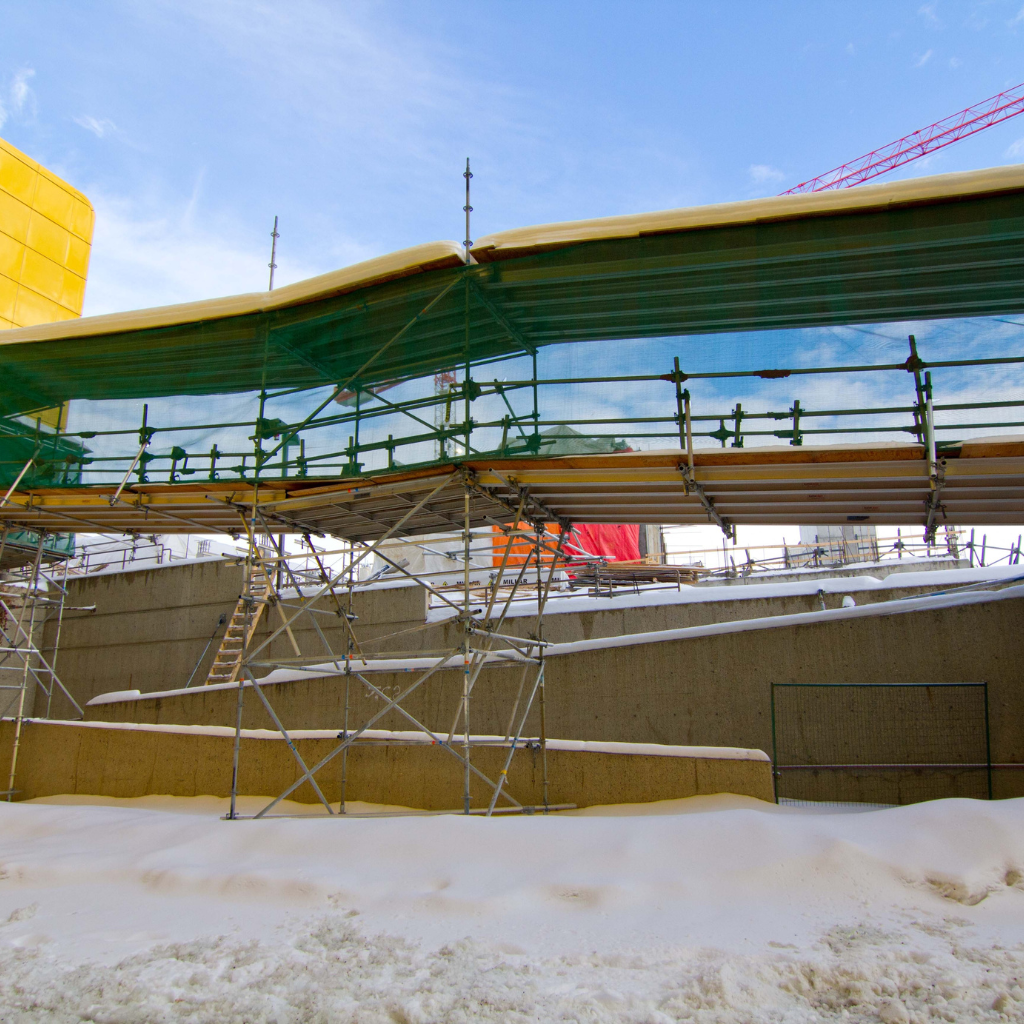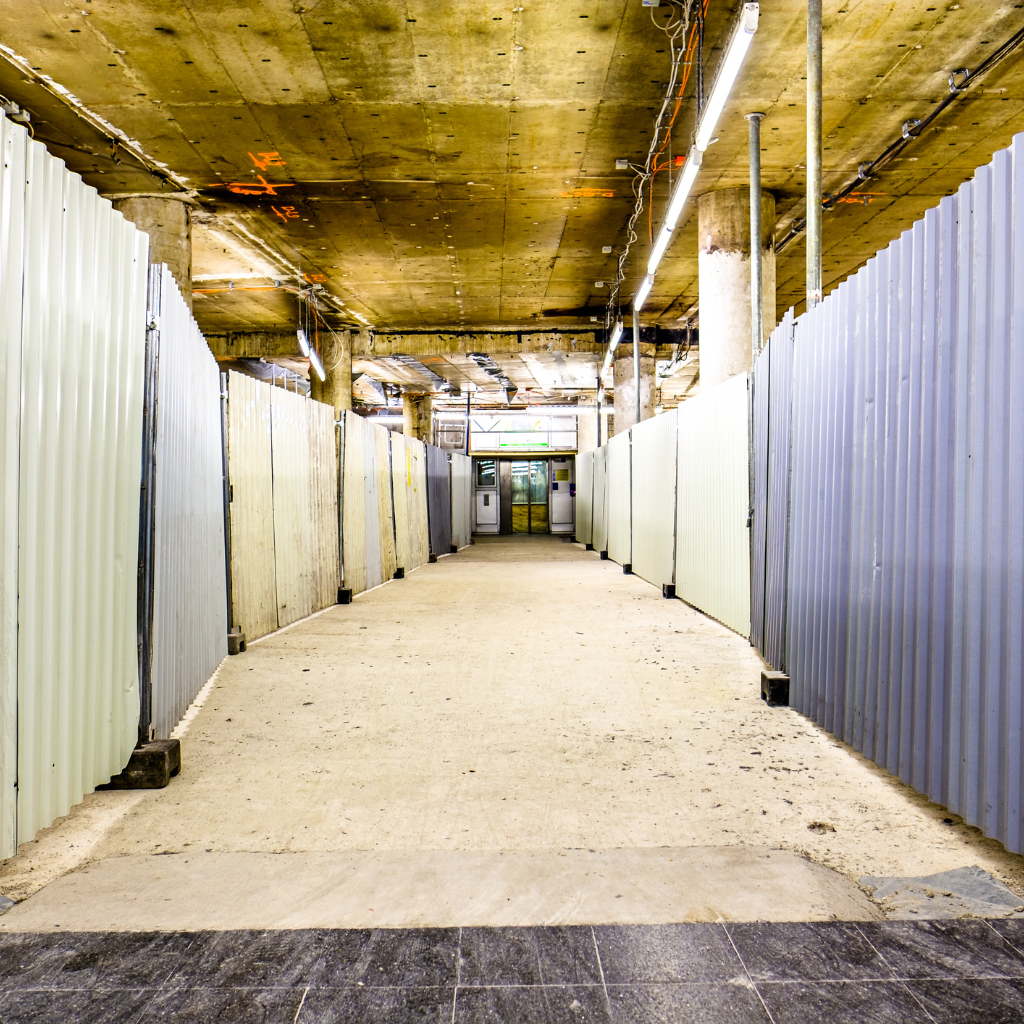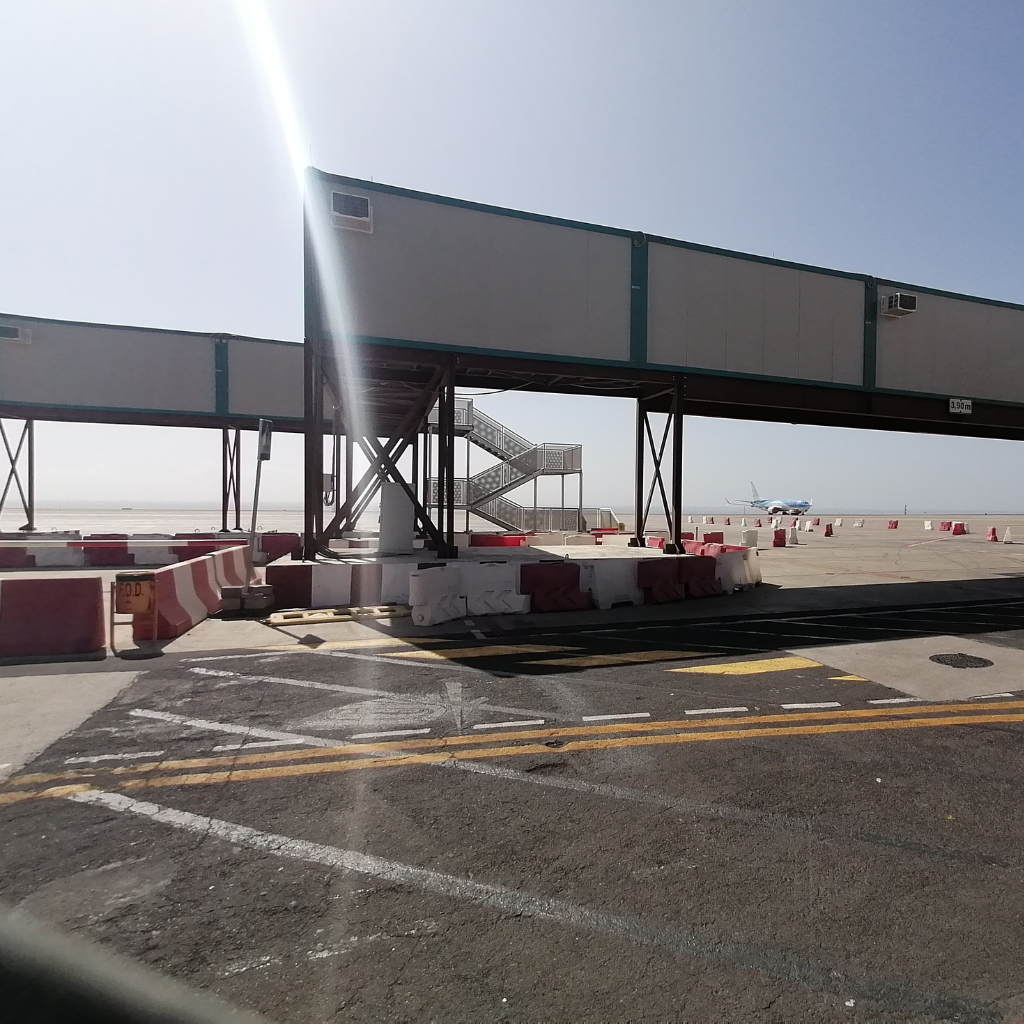Temporary hoarding in construction is a critical safety measure that delineates site boundaries and shields the public from potential hazards. It restricts unauthorised access and maintains project confidentiality while ensuring compliance with safety standards. Various types, including metal and timber, offer durability and adaptability and play a role in noise and dust control. Proper timing and installation coordination are essential. Understanding what is temporary hoarding’s extensive impact can provide valuable insights for its strategic application.
Key Takeaways
- Temporary hoarding provides safety and privacy and defines boundaries around construction sites.
- It protects the public from hazards and restricts unauthorised access to construction areas.
- Hoarding assists in compliance with health and safety standards and local building codes.
- Materials like timber and metal impact noise, dust control, and visual appeal.
- Installation timing and collaboration among stakeholders ensure alignment with construction schedules.
What is the Purpose of Temporary Hoarding in Construction?
Temporary hoarding in construction refers to temporary barriers erected around construction sites to guarantee safety and privacy.
These barriers protect the public from potential hazards, restrict unauthorised access, and maintain the confidentiality of ongoing projects.
The benefits of temporary hoarding include enhanced site security, improved safety standards, and minimising disruptions to the surrounding community.
Defining Temporary Hoarding
A vital component in construction site management, temporary hoarding serves multiple essential functions. Temporary hoarding in construction involves installing robust barriers around the perimeter of a construction site. These temporary construction site hoarding systems meet specific construction site hoarding requirements to guarantee health and safety standards are upheld. By defining clear boundaries, they protect the public and personnel associated with the construction project. The installation of temporary hoarding systems varies depending on site-specific needs, but they typically include modular panels that are easily adjusted or removed as the project progresses. Temporary hoarding construction is essential for maintaining security, minimising unauthorised access, and enhancing site organisation.
| Component | Function | Requirement |
|---|---|---|
| Temporary Hoarding | Boundary Definition | Health and Safety Compliance |
| Site Hoarding Systems | Public Protection | Robust Installation |
| Construction Site Hoarding | Security Enhancement | Adjustable Panels |
| Installation Process | Site Organisation | Modular and Flexible Systems |
| Perimeter Management | Access Control | Project-Specific Specifications |
Why Construction Sites Use Temporary Barriers
While construction projects unfold, implementing temporary barriers is essential for maintaining operational efficiency and safety.
Temporary construction elements, such as construction site hoarding, secure the site by defining clear perimeters. These barriers are critical in preventing unauthorised access and protecting against vandalism.
Establishing a secure boundary guarantees that only authorised personnel engage in construction activities, thereby minimising risks to both the public and workers. Additionally, temporary barriers are strategically placed to direct pedestrian traffic away from hazardous zones, further enhancing safety.
Their presence delineates the construction area, facilitating organised project management and guaranteeing that activities proceed without external interference or accidents, safeguarding all parties involved.

Benefits of Temporary Hoarding in Construction
When strategically implemented, temporary construction hoarding offers myriad benefits beyond site security.
Construction site hoardings play a vital role in ensuring safety by acting as robust site hoarding and fencing, thereby mitigating risks to members of the public. This hoarding solution effectively deters theft and vandalism, safeguarding valuable materials and equipment for uninterrupted construction work.
Additionally, temporary hoarding enhances the site visually by concealing unsightly construction activities, thereby maintaining the aesthetic integrity of surrounding areas.
In the construction industry, temporary hoarding is a prudent strategy addressing practical and environmental concerns. Establishing clear boundaries facilitates smooth operations, ensuring that construction progresses efficiently while minimising disruptions to nearby communities.
What Types of Temporary Hoarding Are Commonly Used in Construction?
In construction, temporary hoarding solutions vary significantly in material and functionality, each serving distinct purposes.
Timber and metal hoarding are prevalent, with differences in durability and cost, while mesh hoarding provides visibility and ventilation for specific site needs.
Additionally, eco-friendly options are gaining traction, offering sustainable alternatives without compromising performance.
What Are the Differences Between Timber and Metal Hoarding?
In the construction industry, temporary hoarding is frequently employed to secure sites and guarantee public safety.
Two prevalent types are timber hoardings and metal panels. Timber hoardings are often chosen for their versatility in structural design, enabling customised solutions for diverse construction sites. They are typically easier to install but may have a shorter lifespan due to their susceptibility to weather conditions.
In contrast, metal panels offer durability and a longer lifespan, making them ideal for extended projects. However, due to their heavier materials, their installation can be more complex.
Both types of site hoardings facilitate controlled access to the site, though the choice of construction hoarding may depend on specific project requirements, including cost considerations and environmental impact.
How Does Mesh Hoarding Work for Construction Sites?
Mesh hoarding presents a practical alternative for securing construction sites, offering unique advantages in specific scenarios. This temporary hoarding system utilises a durable, lightweight mesh material that forms a fence, providing visibility and air circulation. Its design guarantees the safety of workers and the public while maintaining site security.
Mesh hoarding is particularly compelling in areas where visual monitoring of construction activities is necessary or where environmental conditions demand ventilation.
Installation of mesh hoarding is straightforward, making it an efficient choice for temporary works. The system consists of sturdy posts and easily assembled panels, allowing for flexible site adaptation.
Are There Eco-Friendly Options for Temporary Hoarding?
When considering eco-friendly options for temporary hoarding in construction, how can project managers guarantee sustainability without compromising efficiency? The selection of materials plays a pivotal role. Utilising timber from sustainable sources guarantees that construction hoardings are robust and environmentally considerate.
Incorporating recycled or reusable materials for building site hoardings can further enhance sustainability. The design of these construction hoardings should prioritise easy disassembly and reusability to meet diverse hoarding needs for outdoor use.
Additionally, utilising non-toxic paints and finishes reduces environmental impact. By integrating these eco-friendly options, construction sites can align with sustainable practices while maintaining necessary site hoarding functions.
Such thoughtful choices in temporary hoarding design contribute to a more sustainable construction industry.
What are the Construction Site Hoarding Requirements?
Regulatory frameworks and industry standards dictate construction site hoarding requirements to guarantee safety and compliance.
These regulations encompass hoarding height, structural integrity, and material specifications, all of which must be in accordance with local building codes.
Compliance with these standards is essential to mitigate risks and maintain public safety around construction zones.
Understanding Construction Hoarding Regulations
Understanding the construction hoarding regulations is vital to guarantee safety and compliance on construction sites.
Hoardings are temporary structures, and their design must adhere to specific standards. The design of temporary works hoardings varies according to the types of construction and the site requirements.
To secure the area effectively, both internal and external hoardings need to be in place. The principal contractor is responsible for ensuring these regulations are met and must obtain a design check certificate before installation.
Unauthorised removal of any hoarding can lead to significant safety hazards. Compliance with these regulations is vital for safety and avoiding legal repercussions. Adhering to these guidelines guarantees a safe and secure construction environment.
Compliance with Construction Industry Standards
Adherence to construction hoarding regulations provides the foundation for compliance with broader industry standards. Temporary construction hoarding must meet specific requirements to guarantee safety and efficacy on a construction project. Contractors are responsible for obtaining the relevant design check certificate for site hoarding, certifying that temporary works comply with construction industry standards. The lifespan of site hoarding is another critical factor, necessitating regular evaluations to maintain compliance.
| Requirement | Detail |
|---|---|
| Design Check Certificate | Must be obtained by contractors for approval of hoarding design |
| Temporary Works Compliance | Guarantee compliance with industry standards |
| Lifespan of Site Hoarding | Regular assessments for structural integrity |
| Contractors’ Responsibilities | Obtain relevant certifications |
| Construction Project Safety | Implement hoarding that guarantees safety and security |
How Does Temporary Hoarding Secure the Site Perimeter?
Temporary hoarding is a critical barrier in securing the site perimeter by effectively preventing unauthorised access and vandalism.
The principal contractor plays a pivotal role in guaranteeing the integrity of site security by strategically placing and maintaining these barriers.
This system safeguards the construction area and guarantees compliance with safety regulations and project timelines.

Preventing Unauthorised Access and Vandalism
Adequate site security is paramount in construction projects, and temporary hoarding is an essential barrier against unauthorised access and vandalism.
Construction hoarding, a critical component of temporary works, is strategically designed to prevent unauthorised access to the temporary site. This robust structure not only defines the perimeter but also deters potential vandals.
Contractors prioritise site security by installing site hoarding that meets specific hoarding needs, ensuring the integrity of the construction project. The materials used in construction hoarding are selected for their durability and strength, effectively safeguarding equipment and materials within the site.
Additionally, security features such as surveillance cameras and lighting often enhance temporary site barriers to deter criminal activities.
Role of the Principal Contractor in Site Security
While the principal contractor assumes ultimate responsibility for site security, the deployment of temporary hoarding is essential in safeguarding the construction perimeter. Temporary construction hoarding serves to obscure the site, minimising unauthorised access and potential security breaches. The principal contractor must oversee the installation of hoarding systems, guaranteeing compliance with site security regulations and standards. Contractors enhance perimeter defences and manage risks by integrating temporary works into the construction project.
| Key Component | Function | Importance |
|---|---|---|
| Hoarding Systems | Obscuring the site | Prevent unauthorised visibility |
| Installation | Secure perimeter | Enhance site security |
| Principal Role | Oversee the construction | Guarantee compliance and safety |
When Do Hoardings Need to Be in Place?
Various factors influence the timing of installing temporary hoardings in construction projects, including the specific phases of the construction process that necessitate site protection.
Hoardings are typically required during the initial stages of site preparation, such as demolition or excavation. They must remain in place until the project reaches completion and poses no further risk to the public or workers.
Proper scheduling and coordination with the construction timeline guarantee that hoardings provide adequate safety and security throughout the project.
Timing Considerations for Temporary Works
Before commencing construction activities, a thorough understanding of the timing considerations for temporary works, such as hoardings, is essential to secure site safety and project efficiency.
Temporary hoarding must be strategically planned and implemented to align with the project’s timeline. Key aspects include:
- Hoarding Installation: Confirming installation before significant construction begins to secure the perimeter.
- Design Check Certificate: Obtaining certification for compliance with safety standards before installation.
- Temporary Works Coordinator: Appoint a coordinator to oversee and manage timing and implementation.
- Contractors and Site Hoarding: Coordinating with contractors to integrate hoarding within the overall construction schedule.
These considerations guarantee that the temporary works align with the overall objectives of the construction project, maintaining site safety and operational fluidity.
Phases of Construction Requiring Site Hoardings
Effective planning for the construction phases necessitates timely site hoarding placement to secure safety and regulatory compliance.
Temporary hoardings are typically installed at the initial phase of a construction project. This guarantees that contractors can secure the site perimeter, protecting the public from construction hazards and obscuring site activities from unauthorised viewing.
During excavation and foundation phases, hoardings serve the dual purpose of safety and privacy. As the project progresses to superstructure development, hoardings may require design adjustments to accommodate changing site conditions.
Installations are adapted to each phase, securing seamless integration with project timelines. Experienced contractors understand the importance of strategically planned hoarding installations to maintain site integrity throughout the construction lifecycle.
How Does Temporary Hoarding Impact the Surrounding Community?
Temporary hoarding is critical in enhancing public safety by clearly delineating construction zones and preventing unauthorised access, thereby minimising accident risks.
It also plays a significant part in noise and dust control, as the barriers can be engineered to reduce the propagation of construction-related disturbances into the surrounding environment.
Additionally, temporary hoarding is often tailored to incorporate visually appealing elements, such as artistic graphics or community information, to mitigate its aesthetic impact on the local area.
How Can Temporary Hoarding Improve Public Safety Near Construction Zones?
When implemented correctly, temporary hoarding can significantly enhance public safety around construction zones by acting as a physical barrier that prevents unauthorised access and shields pedestrians from potential hazards.
Installing temporary construction hoarding involves collaboration among contractors, the design team, and the coordinator of the temporary work to guarantee compelling site hoarding. This type of hoarding not only obscures the site but also employs materials like steel hoarding for durability.
Key contributions to public safety include:
- Preventing unauthorised access: Restricts entry to only authorised personnel.
- Shielding pedestrians: Protects the public from debris and other construction site hazards.
- Guiding public movement: Directs pedestrian pathways to safe areas.
- Maintaining site integrity: Ensures the construction zone remains undisturbed by external interference.
These measures collectively contribute to safer construction environments.
Does Temporary Hoarding Affect Noise and Dust Control?
Temporary hoarding can markedly influence noise and dust control in construction areas, impacting the surrounding community.
Site hoarding serves as a barrier on construction sites, mitigating the transmission of sound and airborne particles. Contractors utilise hoarding systems as part of their temporary works to achieve effective noise and dust control.
Hoarding installation is an essential step during a construction project. It involves strategically placing barriers to minimise environmental disturbances. The design and material selection for temporary hoarding are critical in controlling noise and dust levels.
While it does not eliminate the issues, a well-planned hoarding system considerably reduces their extent, protecting the community from potential health hazards and ensuring regulatory compliance during construction activities.

How Is Temporary Hoarding Designed to Be Visually Appealing?
How can temporary hoarding be designed to enhance visual appeal? In construction sites, temporary hoarding plays a significant role in safeguarding and delineating areas. Its aesthetic design must consider various factors to create a visually appealing environment.
Contractors focus on the following:
- Design Check Certificate: This guarantees compliance with design standards and aligns with aesthetic goals.
- Temporary Works: Utilises innovative materials and techniques to enhance visual impact.
- Installation Precision: Guarantees seamless integration into the construction project, maintaining a cohesive visual theme.
- Site Hoarding Customisation: Tailored designs reflecting community culture or project branding.
Conclusion
In summary, temporary hoarding is essential in construction, fulfilling multiple roles such as safety, security, and aesthetic enhancement of site perimeters. Adhering to regulatory requirements guarantees a secure environment while minimising disruptions to the surrounding community. Various types of hoarding materials provide flexibility to meet specific project needs. Ultimately, temporary hoarding protects the worksite and contributes to efficient project management and community relations throughout the construction process.


